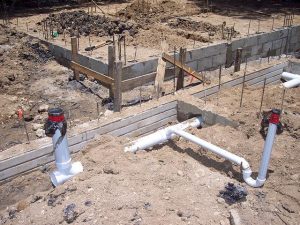The 5 Stages of Building: A Comprehensive Guide
When it comes to any construction project, whether it’s a small home renovation or a large-scale commercial development, there are five key stages that every builder follows. These stages provide a structured framework for the entire building process, ensuring that everything is executed smoothly and efficiently. In this article, we will delve into each stage, providing you with valuable insights into the construction process. Let’s explore the five stages of building in detail:
Stage 1: Planning and Design
The first stage of building begins with meticulous planning and design. This is the foundation upon which the entire project will be built. During this stage, builders and architects work closely with the client to understand their vision, goals, and requirements. The key tasks involved in this stage include:
Site Evaluation:
The builder assesses the site’s suitability for construction, considering factors such as soil conditions, topography, access, and utilities.
Conceptualization:
Architects and designers create initial sketches and drawings based on the client’s preferences, incorporating functionality, aesthetics, and compliance with building codes.
Budgeting and Scheduling:
A comprehensive budget is developed, including estimates for materials, labor, permits, and contingencies. A project schedule is also created, outlining the timeline for each phase of construction.

Stage 2: Pre-construction
Once the planning and design phase is complete, the project moves into the pre-construction stage. This stage involves detailed preparations before actual construction work begins. The primary objectives of this stage are:
Permitting and Approvals:
Builders obtain the necessary permits and approvals from local authorities, ensuring compliance with building codes and regulations.
Procurement:
Materials and equipment required for the construction are sourced, and contracts are finalized with subcontractors and suppliers.
Site Preparation:
The construction site is cleared, and any necessary demolition, excavation, or grading work is undertaken. Temporary utilities may also be set up.
Stage 3: Construction
With the planning and pre-construction stages completed, the construction phase begins. This is when the project starts taking shape, and the builder brings the designs to life. The construction stage involves:
Foundation and Framing:
The foundation is laid, followed by the construction of the structural framework of the building, including walls, floors, and roofs.
Systems Installation:
Essential systems such as electrical, plumbing, heating, ventilation, and air conditioning (HVAC) are installed during this phase.
Interior and Exterior Finishes:
Once the building is weatherproofed, interior finishes like flooring, painting, tiling, and cabinetry are installed. Exterior finishes such as cladding, landscaping, and paving are also completed.

Stage 4: Testing and Commissioning
After the construction phase, the project enters the testing and commissioning stage. This stage ensures that all systems and components of the building are functioning properly and meet the required standards. Key activities in this stage include:
Systems Testing:
All installed systems, such as electrical, plumbing, HVAC, fire safety, and security, are tested to ensure they are fully operational and meet the necessary safety standards.
Commissioning:
The building’s systems are fine-tuned and adjusted to optimize their performance. This includes balancing HVAC systems, calibrating electrical systems, and ensuring proper functionality of all equipment.
Stage 5: Completion and Handover
The final stage of the building process is the completion and handover stage. It involves the final touches and the official transfer of the building to the owner or client. This stage encompasses the following activities:
Punch List:
A punch list is created, detailing any remaining minor issues or unfinished tasks that need to be addressed before the project can be considered complete. https://citibuildconstruction.com.au/
Final Inspections and Certifications:
The building undergoes a final inspection by local authorities to ensure compliance with building codes. Additionally, necessary certifications, such as occupancy permits, are obtained.
Client Orientation and Handover:
The builder conducts a comprehensive orientation session with the client, providing information about the building’s operations and maintenance. The keys and documentation are handed over to the client, officially transferring ownership or control of the building.
Post-Construction Services:
Even after the handover, builders often provide post-construction services, addressing any warranty claims, resolving any issues that arise, and ensuring client satisfaction.
In conclusion, the five stages of building—planning and design, pre-construction, construction, testing and commissioning, and completion and handover—provide a systematic framework for the construction process. By following these stages, builders can ensure a smooth and efficient execution of any construction project. Whether you’re planning a small-scale renovation or embarking on a large commercial venture, understanding these stages will help you navigate the construction process with confidence.
Remember, proper planning, attention to detail, and collaboration between all stakeholders are crucial for successful construction projects. By following the five stages of building, you can achieve your desired outcome while maintaining quality, adhering to regulations, and delivering a project that meets your client’s expectations.
